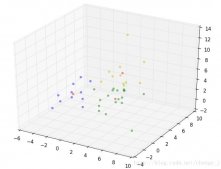這篇文章主要介紹了通過實(shí)例了解Python str()和repr()的區(qū)別,文中通過示例代碼介紹的非常詳細(xì),對大家的學(xué)習(xí)或者工作具有一定的參考學(xué)習(xí)價(jià)值,需要的朋友可以參考下
區(qū)別
其實(shí)用處就是最大的區(qū)別了:str()主要用來為終端用戶輸出一些信息,而repr()主要用來調(diào)試;同時(shí)后者的目標(biāo)是為了消除一些歧義(例如浮點(diǎn)數(shù)的精度問題),前者主要為了可讀。
使用
|
1
2
3
4
5
6
7
8
9
|
In [12]: s = 'abc'In [13]: print(str(s))abcIn [14]: print(2.0/11)0.18181818181818182In [15]: repr(s)Out[15]: "'abc'"In [16]: repr(2.0/11)Out[16]: '0.18181818181818182' |
仔細(xì)看一下,其實(shí)并沒產(chǎn)生精度上的不同;但是當(dāng)在Python2中就會發(fā)現(xiàn)區(qū)別了:
|
1
2
3
4
|
>>> eval('2.0/11')0.18181818181818182>>> print(2.0/11)0.181818181818 |
所以換個(gè)例子:
|
1
2
3
4
5
6
7
8
9
10
|
In [17]: import datetimeIn [18]: n = datetime.datetime.now()In [19]: print(str(n) ...: )2020-01-16 09:22:13.361995In [20]: repr(n)Out[20]: 'datetime.datetime(2020, 1, 16, 9, 22, 13, 361995)' |
可以看到前者可讀性更好,后者打印出來了類型和值,更適合調(diào)試;
實(shí)現(xiàn)
二者都通過內(nèi)置函數(shù)實(shí)現(xiàn);看看官方文檔說repr()
Return a string containing a printable representation of an object.
A class can control what this function returns for its instances by defining a __repr__() method.
意味著可以自定義這個(gè)函數(shù),并實(shí)現(xiàn)自己的repr()(str同理),如下:
|
1
2
3
4
5
6
7
8
9
10
11
12
13
14
15
16
17
|
In [35]: class TestClass: ...: def __init__(self, name, age): ...: self.name = name ...: self.age = age ...: def __repr__(self): ...: return 'repr: ' + self.name + ' ,' + self.age ...: def __str__(self): ...: return self.name + ' ,' + self.age ...: In [38]: tt = TestClass('tony', '23')In [39]: repr(tt)Out[39]: 'repr: tony ,23'In [40]: str(tt)Out[40]: 'tony ,23' |
以上就是本文的全部內(nèi)容,希望對大家的學(xué)習(xí)有所幫助,也希望大家多多支持服務(wù)器之家。
原文鏈接:https://www.cnblogs.com/wswang/p/12199747.html












